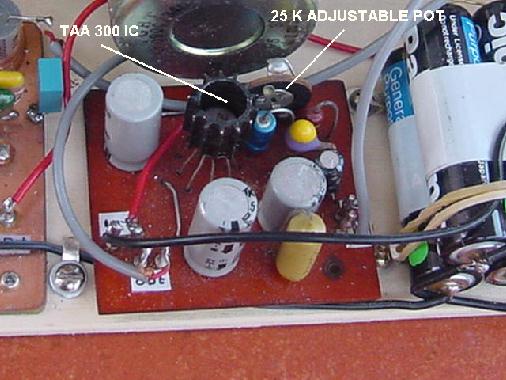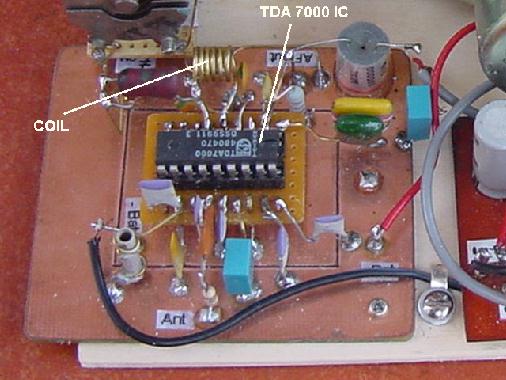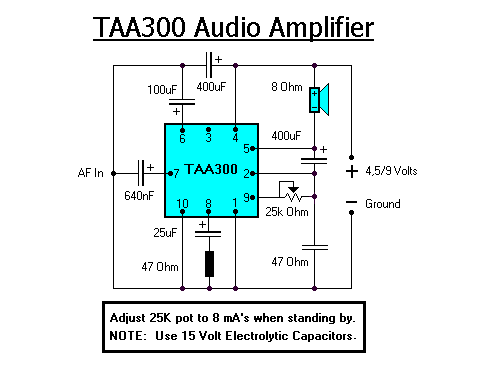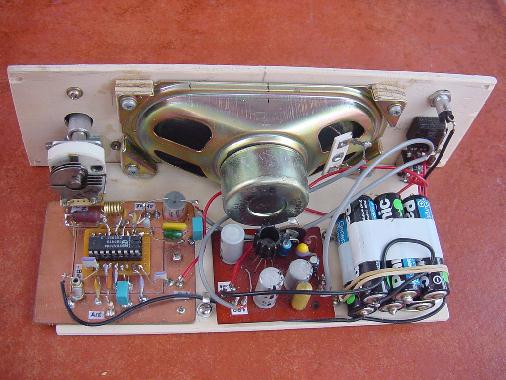 |
A Cameo
 |
Among FM Receivers
In the modern world of communications, the FM band that spreads between 88 and 108 Mhz, has an outstanding place. It is a quite interesting electromagnetic band to explore, especially if you explore this narrow band with a receiver that you have built yourself. In searching FM stations, you will experiment the sensation of surprise when you realize the great number of radio transmitters packed into the span dial of your receiver.
To build an FM receiver, luckily enough, you don't have to resort to complicated superheterodyne systems with the bothering of intermediate frequency tranformer alignments and other really difficult points to adjust. What you have is a handy special integrated circuit that solves all these problems and brings you a receiver of quick and easy construction....the TDA 7000 IC.
With the TDA 7000 you can build an FM radio with a minimum of components; most of them so easy to manage...like the ceramic capacitors that do not require polarization...and only two resistors. The components you will employ will be of small dimensions and low cost. Even the integrated circuit itself, the TDA 7000, is not of great cost.
Nevertheless, this IC in itself, is a complete superheterodyne receiver with all the problems of alignment previously solved by the constructing engineers. In the chip there is a radio frequency amplifier that notably increases the sensitivity...a mixer...a local oscillator...an intermediate frequency amplifier...a phase demodulator and the mute detector. A really master work of engineering packed in a capsule of only 20 milimeters long and 6 milimeters wide.
I experimented with this chip with the fascination of discovering something really new. First, I mounted the receiver on a breadboard expecting that with the inter-capacities of the breadboard contacts and the 'so high' frequencies of FM, it would not work at all. But I was wrong...the circuit started to give signs of life! It is true that my breadboard had the contacts more separated than the normal breadboards and this diminished the inter-contact capacities.
Animated with this success, I decided to mount a new receiver. This time in a more formal and technical form. I built my second receiver in the 'Manhattan Style' of which system I am very fond. Every project that I have built with the components mounted in a vertical fashion, started to work at the first connection to the power source. With the TDA 7000, there was no exception. It started to function as soon as I applied the 9 volts to it.
I experimented the reception with a crystal earphone. I then connected it to an audio amplifier. This is another great chip in the 'audio electronic' world...the TDA 810. This IC delivers enough power to drive a big louspeaker. The result was outstanding!
Nevertheless, I consider the TDA 810 too powerful for this receiver and finally resorted to the TAA 300 audio IC. This integrated circuit is not so powerful and more appropriate to the TDA 7000 receiver.
 |
But you do have a very nice solution to get that audio amplification solved...and it is the LM386 AF IC. Now this IC gives you an amplifier so very easy to build and is quite good to drive a small speaker.
Finally the building of a TDA 7000 receiver brings you the opportunity of experimenting with coils and with variable capacitors. Changing the number of coil turns, you can explore different parts of the FM band, even switch to other bands. My receiver has a 6 turns of copper wire, number 12, no enamel, 10 milimeters long and 6 milimeters in diameter. The tuning capacitor is 2 to 30 pF's.
 |
The good results obtained with this second receiver led me to build another one. This time with a printed circuit board. I developed this PCB with a copper panel of 42 X 50 milimeters. This measurement allows you to place the components quite comfortably.
Experimenting with the TDA 7000, I discovered with pleasure a new dimension of radio reception aside from medium wave and short wave.
...have fun building your TDA 7000 FM receiver.
Pedro
Schematic Diagrams
of the
TDA7000 FM Receiver & TAA300 Audio Amplifier
.gif) |
 |
Below are a few more pictures that I have taken of the
TDA 7000 FM Receiver Project
.gif) |
 |
.jpg) |
.jpg) |
| You are our website guest number 1511 since June 11th 2002 |